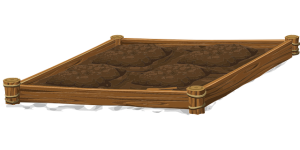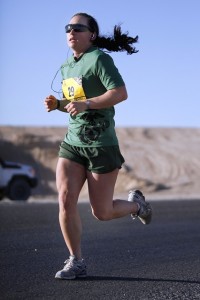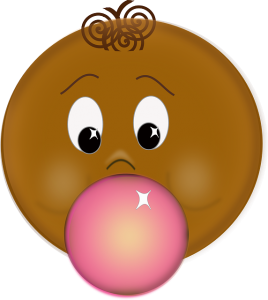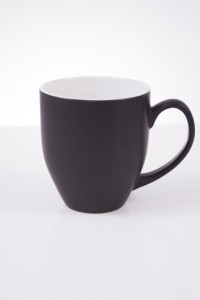1.3: A New Flower
- Page ID
- 47726
\( \newcommand{\vecs}[1]{\overset { \scriptstyle \rightharpoonup} {\mathbf{#1}} } \)
\( \newcommand{\vecd}[1]{\overset{-\!-\!\rightharpoonup}{\vphantom{a}\smash {#1}}} \)
\( \newcommand{\id}{\mathrm{id}}\) \( \newcommand{\Span}{\mathrm{span}}\)
( \newcommand{\kernel}{\mathrm{null}\,}\) \( \newcommand{\range}{\mathrm{range}\,}\)
\( \newcommand{\RealPart}{\mathrm{Re}}\) \( \newcommand{\ImaginaryPart}{\mathrm{Im}}\)
\( \newcommand{\Argument}{\mathrm{Arg}}\) \( \newcommand{\norm}[1]{\| #1 \|}\)
\( \newcommand{\inner}[2]{\langle #1, #2 \rangle}\)
\( \newcommand{\Span}{\mathrm{span}}\)
\( \newcommand{\id}{\mathrm{id}}\)
\( \newcommand{\Span}{\mathrm{span}}\)
\( \newcommand{\kernel}{\mathrm{null}\,}\)
\( \newcommand{\range}{\mathrm{range}\,}\)
\( \newcommand{\RealPart}{\mathrm{Re}}\)
\( \newcommand{\ImaginaryPart}{\mathrm{Im}}\)
\( \newcommand{\Argument}{\mathrm{Arg}}\)
\( \newcommand{\norm}[1]{\| #1 \|}\)
\( \newcommand{\inner}[2]{\langle #1, #2 \rangle}\)
\( \newcommand{\Span}{\mathrm{span}}\) \( \newcommand{\AA}{\unicode[.8,0]{x212B}}\)
\( \newcommand{\vectorA}[1]{\vec{#1}} % arrow\)
\( \newcommand{\vectorAt}[1]{\vec{\text{#1}}} % arrow\)
\( \newcommand{\vectorB}[1]{\overset { \scriptstyle \rightharpoonup} {\mathbf{#1}} } \)
\( \newcommand{\vectorC}[1]{\textbf{#1}} \)
\( \newcommand{\vectorD}[1]{\overrightarrow{#1}} \)
\( \newcommand{\vectorDt}[1]{\overrightarrow{\text{#1}}} \)
\( \newcommand{\vectE}[1]{\overset{-\!-\!\rightharpoonup}{\vphantom{a}\smash{\mathbf {#1}}}} \)
\( \newcommand{\vecs}[1]{\overset { \scriptstyle \rightharpoonup} {\mathbf{#1}} } \)
\( \newcommand{\vecd}[1]{\overset{-\!-\!\rightharpoonup}{\vphantom{a}\smash {#1}}} \)
\(\newcommand{\avec}{\mathbf a}\) \(\newcommand{\bvec}{\mathbf b}\) \(\newcommand{\cvec}{\mathbf c}\) \(\newcommand{\dvec}{\mathbf d}\) \(\newcommand{\dtil}{\widetilde{\mathbf d}}\) \(\newcommand{\evec}{\mathbf e}\) \(\newcommand{\fvec}{\mathbf f}\) \(\newcommand{\nvec}{\mathbf n}\) \(\newcommand{\pvec}{\mathbf p}\) \(\newcommand{\qvec}{\mathbf q}\) \(\newcommand{\svec}{\mathbf s}\) \(\newcommand{\tvec}{\mathbf t}\) \(\newcommand{\uvec}{\mathbf u}\) \(\newcommand{\vvec}{\mathbf v}\) \(\newcommand{\wvec}{\mathbf w}\) \(\newcommand{\xvec}{\mathbf x}\) \(\newcommand{\yvec}{\mathbf y}\) \(\newcommand{\zvec}{\mathbf z}\) \(\newcommand{\rvec}{\mathbf r}\) \(\newcommand{\mvec}{\mathbf m}\) \(\newcommand{\zerovec}{\mathbf 0}\) \(\newcommand{\onevec}{\mathbf 1}\) \(\newcommand{\real}{\mathbb R}\) \(\newcommand{\twovec}[2]{\left[\begin{array}{r}#1 \\ #2 \end{array}\right]}\) \(\newcommand{\ctwovec}[2]{\left[\begin{array}{c}#1 \\ #2 \end{array}\right]}\) \(\newcommand{\threevec}[3]{\left[\begin{array}{r}#1 \\ #2 \\ #3 \end{array}\right]}\) \(\newcommand{\cthreevec}[3]{\left[\begin{array}{c}#1 \\ #2 \\ #3 \end{array}\right]}\) \(\newcommand{\fourvec}[4]{\left[\begin{array}{r}#1 \\ #2 \\ #3 \\ #4 \end{array}\right]}\) \(\newcommand{\cfourvec}[4]{\left[\begin{array}{c}#1 \\ #2 \\ #3 \\ #4 \end{array}\right]}\) \(\newcommand{\fivevec}[5]{\left[\begin{array}{r}#1 \\ #2 \\ #3 \\ #4 \\ #5 \\ \end{array}\right]}\) \(\newcommand{\cfivevec}[5]{\left[\begin{array}{c}#1 \\ #2 \\ #3 \\ #4 \\ #5 \\ \end{array}\right]}\) \(\newcommand{\mattwo}[4]{\left[\begin{array}{rr}#1 \amp #2 \\ #3 \amp #4 \\ \end{array}\right]}\) \(\newcommand{\laspan}[1]{\text{Span}\{#1\}}\) \(\newcommand{\bcal}{\cal B}\) \(\newcommand{\ccal}{\cal C}\) \(\newcommand{\scal}{\cal S}\) \(\newcommand{\wcal}{\cal W}\) \(\newcommand{\ecal}{\cal E}\) \(\newcommand{\coords}[2]{\left\{#1\right\}_{#2}}\) \(\newcommand{\gray}[1]{\color{gray}{#1}}\) \(\newcommand{\lgray}[1]{\color{lightgray}{#1}}\) \(\newcommand{\rank}{\operatorname{rank}}\) \(\newcommand{\row}{\text{Row}}\) \(\newcommand{\col}{\text{Col}}\) \(\renewcommand{\row}{\text{Row}}\) \(\newcommand{\nul}{\text{Nul}}\) \(\newcommand{\var}{\text{Var}}\) \(\newcommand{\corr}{\text{corr}}\) \(\newcommand{\len}[1]{\left|#1\right|}\) \(\newcommand{\bbar}{\overline{\bvec}}\) \(\newcommand{\bhat}{\widehat{\bvec}}\) \(\newcommand{\bperp}{\bvec^\perp}\) \(\newcommand{\xhat}{\widehat{\xvec}}\) \(\newcommand{\vhat}{\widehat{\vvec}}\) \(\newcommand{\uhat}{\widehat{\uvec}}\) \(\newcommand{\what}{\widehat{\wvec}}\) \(\newcommand{\Sighat}{\widehat{\Sigma}}\) \(\newcommand{\lt}{<}\) \(\newcommand{\gt}{>}\) \(\newcommand{\amp}{&}\) \(\definecolor{fillinmathshade}{gray}{0.9}\)
Learning Goals
In this chapter, you will learn to:
- Print the alphabet in lower case letters
- Hear, read, and write words with a short /o/ and a short /u/
- Copy short sentences
- Read common sight words in a paragraph
- Answer questions about a story
- State an opinion about a reading
- End a sentence with a period or question mark
Talk About It
- Do you have any grandparents? What will you always remember about them?
Picture Dictionary | ||
Use the pictures to help you figure out the words. | ||
 |  |  |
| grandma | plane | flowers |
 |  |  |
| garden | club | know |
 |  |  |
| long | time | home |
 | ||
| smile | ||
Practice reading these words without the pictures. | ||||
| time | garden | smile | home | club |
| flowers | long | know | plane | grandma |
Word Skills
Word Patterns
The letters a, e, i, o, and u are called vowels. The letter o makes an /o/ sound like in octopus.

Match each word to a picture.
| log | mop | dot | jog | hot |
| cot | cop | pot | top | box |
 |  |  |
| 1. ____________ | 2. ____________ | 3. ____________ |
 |  |  |
| 4. ____________ | 5. ____________ | 6. ____________ |
 |  |  |
| 7. ____________ | 8. ____________ | 9. ____________ |
 | ||
| 10. ____________ |
Word Patterns
The letter u says /u/ like in up.

Match each word to a picture.
| sun | mud | rug | mug | pup |
| bug | cup | gum | nut |
 |  |  |
| 11. ____________ | 12. ____________ | 13. ____________ |
 |  |  |
| 14. ____________ | 15. ____________ | 16. ____________ |
 |  |  |
| 17. ____________ | 18.____________ | 19. ____________ |
Pick the word that matches the picture. | |||
| 20. |  | mup | mop |
| 21. |  | bug | bog |
| 22. |  | gum | gom |
| 23. |  | jog | jug |
| 24. |  | cop | cup |
| 25. |  | bux | box |
Read these sentences. Practice writing the words. Begin with an upper case letter. |
| The mug is hot. |
 |
| Is this gum on the rug? |
 |
| Can you mop up the mud? |
 |
| The pup had a nap on the cot. |
 |
| The cop sat on the log. |
 |
You will see these words in the story. They all have the /o/ sound like octopus.
| lot | not | on |
You will see these words in the story. They all have the /u/ sound like up.
| clubs | but | hunt |
Use Your Reading Skills
Listen to A New Flower. Then read A New Flower in BC Reads: Adult Literacy Fundamental English – Reader 1.
An audio element has been excluded from this version of the text. You can listen to it online here: https://opentextbc.ca/abealf1/?p=52
Check Your Understanding
1. Who goes on a plane for the first time?
________________ goes on a plane for the first time.
2. What does the grandma see that she has never seen before?
The grandma sees a ________________.
3. What three things do men do back home?
Back home, men ________________, ________________, and ________________.
4. What makes Dave different from the men back home?
Dave is different from the men back home because he knows about ________________.
5. Do you think the grandma likes Dave? Why or why not? Discuss with a classmate.
Writing
Below are all the letters of the alphabet. They are in upper case. Write each letter in lower case. The first one is done for you.
| A ___a___ | B _______ | C _______ | D _______ |
| E _______ | F _______ | G _______ | H _______ |
| I _______ | J _______ | K _______ | L _______ |
| M _______ | N _______ | O _______ | P _______ |
| Q _______ | R _______ | S _______ | T _______ |
| U _______ | V _______ | W _______ | X _______ |
| Y _______ | Z _______ |
Grammar Rule
A sentence can be a question or a statement.
A question asks for information. It ends with a question mark.
What is your name? – YES
What is your name – NO
What is your name. – NO
A statement gives information. It ends with a period.
My name is Ted. – YES
My name is Ted – NO
Writing Task
Think of a time when you acted differently from how people expect a man or woman to act. Tell the story to your instructor. Your instructor will write down your words. Then copy your story into your notebook.
When you are done, read your story.
- Did you begin each sentence with an upper case letter?
- Did you end each sentence with a period or question mark?
- Are you missing any words?
Answer Key | |
| Word Skills | |
| QUESTION | ANSWER |
| 1 | cop |
| 2 | box |
| 3 | mop |
| 4 | dot |
| 5 | top |
| 6 | cot |
| 7 | jog |
| 8 | pot |
| 9 | log |
| 10 | hot |
| 11 | pup |
| 12 | nut |
| 13 | bug |
| 14 | mud |
| 15 | sun |
| 16 | gum |
| 17 | rug |
| 18 | mug |
| 19 | cup |
| 20 | mop |
| 21 | bug |
| 22 | gum |
| 23 | jog |
| 24 | cup |
| 25 | box |
| Check Your Understanding | |
| QUESTION | ANSWER |
| 1 | The grandma |
| 2 | flower |
| 3 | hunt, fish, farm |
| 4 | flowers |
| Writing | |
| UPPER CASE | LOWER CASE |
| A | a |
| B | b |
| C | c |
| D | d |
| E | e |
| F | f |
| G | g |
| H | h |
| I | i |
| J | j |
| K | k |
| L | l |
| M | m |
| N | n |
| O | o |
| P | p |
| Q | q |
| R | r |
| S | s |
| T | t |
| U | u |
| V | v |
| W | w |
| X | x |
| Y | y |
| Z | z |
Attributions
See the Attributions page near the end of this book.


